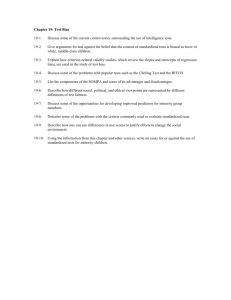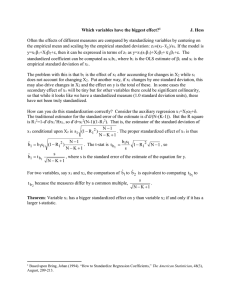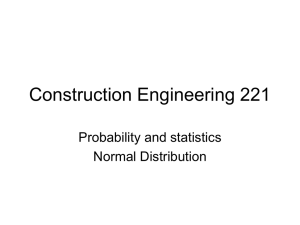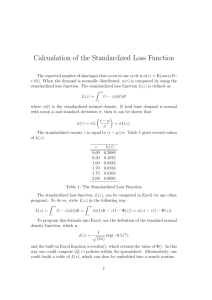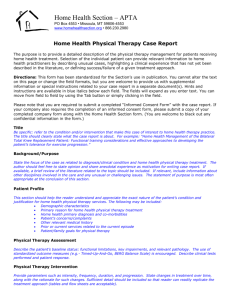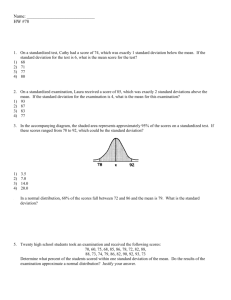Normal Distribution
advertisement
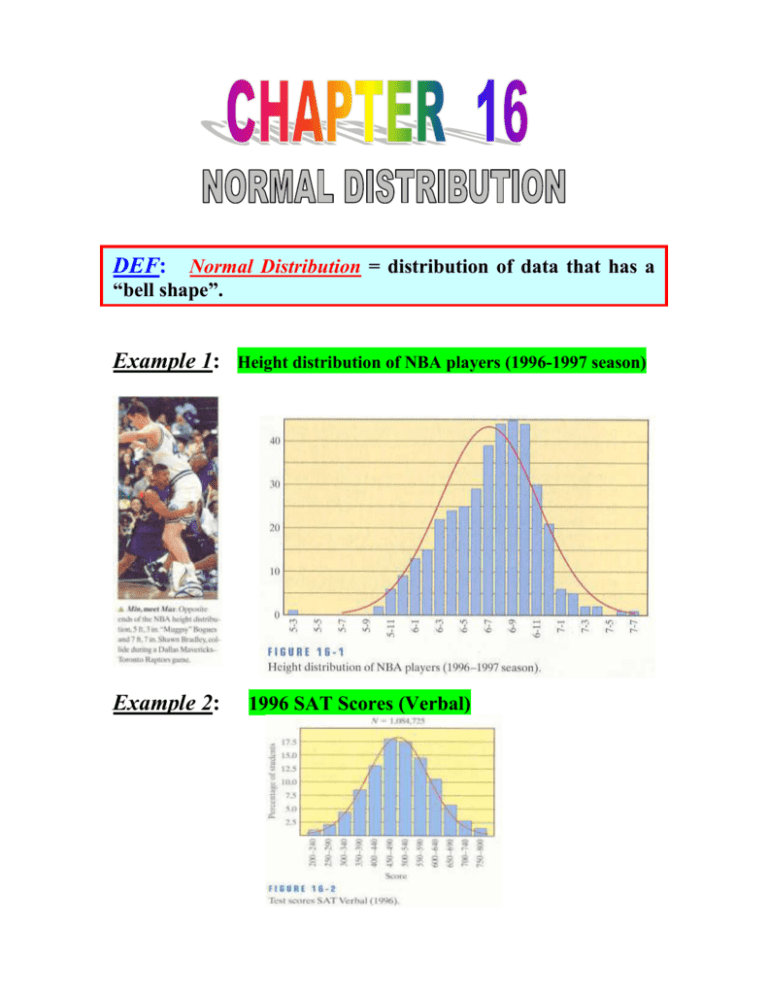
DEF: Normal Distribution = distribution of data that has a “bell shape”. Example 1: Example 2: Height distribution of NBA players (1996-1997 season) 1996 SAT Scores (Verbal) Therefore, every normal distribution has associated a normal curve as below: Symmetry - 2 identical halves Center = Median = Average (Mean) = Standard Deviation = Where: -- Points of Inflection = point where the curve switches from bending down to bending up -- = distance between the Point of Inflection and -- Quartiles - numbers that split the data into quarters -- Q3 + (.675) -- Q1 (.675) The 68-95-99.7 rule When we look at any normal distribution, we can see that most of the data is concentrated in the neighborhood of the center. As we move away from the center, the heights of the columns drop rather fast, and if we go far enough away from the center, there are essentially no data to be found. These are all rather informal observations, but there is a more formal way to phrase this called the 68-95-99.7 rule. This useful rule is obtained by using 1, 2, and 3 standard deviations above and below the mean as special landmarks, and in effect, it is three separate rules in one. 1. In every normal distribution, 68% of all the data values fall within 1 standard deviation above and below the mean. In other words, 68% of all the data have standardized values between -1 and 1. The remaining 32% of the data have standardized values greater than or equal to 1 or less than or equal to -1. By symmetry, there is an equal amount of each. [See the figure (a) from above.] 2. In every normal distribution, 95% of all the data values fall within 2 standard deviations above and below the mean. In other words, 95% of all the data have standardized values between - 2 and 2. The remaining 5% of the data are divided equally between data with standardized values less than or equal to –2 and data with standardized values greater than or equal to 2. [See the figure (b) from above.] 3. In every normal distribution, 99.7% (which is practically 100%) of all the data values fall within 3 standard deviations above and below the mean. In other words, 99.7% of all the data have standardized values between -3 and 3. There is a minuscule amount of data with standardized values outside this range. [See the figure (c) from above.] Example 1 (page 548): A data set has a normal distribution with a mean = 505 and a standard deviation of = 110. Then, we can conclude that: o Median is 505 - half the data is greater than or equal to 505, half is less than 505. o Q1 505 - .675(110) = 430.75. So ¼ of the data is less than or to 430.75, ¼ is between 430.75 and 505, ¾ is greater than 430.75. o Q3 505 + .675(110) = 579.25. Example 2 (Exerc. 5 page 560): A data set has a normal distribution with a mean = 81.2 and a standard deviation of = 12.4. We can conclude that: o Median is 81.2. o Q1 81.2 .675(12.4) = 72.83. o Q3 81.2 + .675(12.4) = 69.57.

